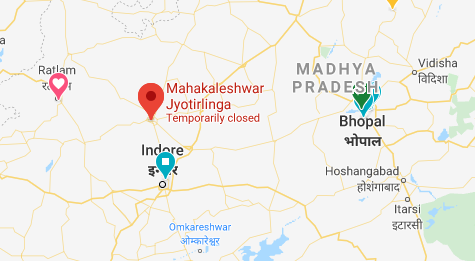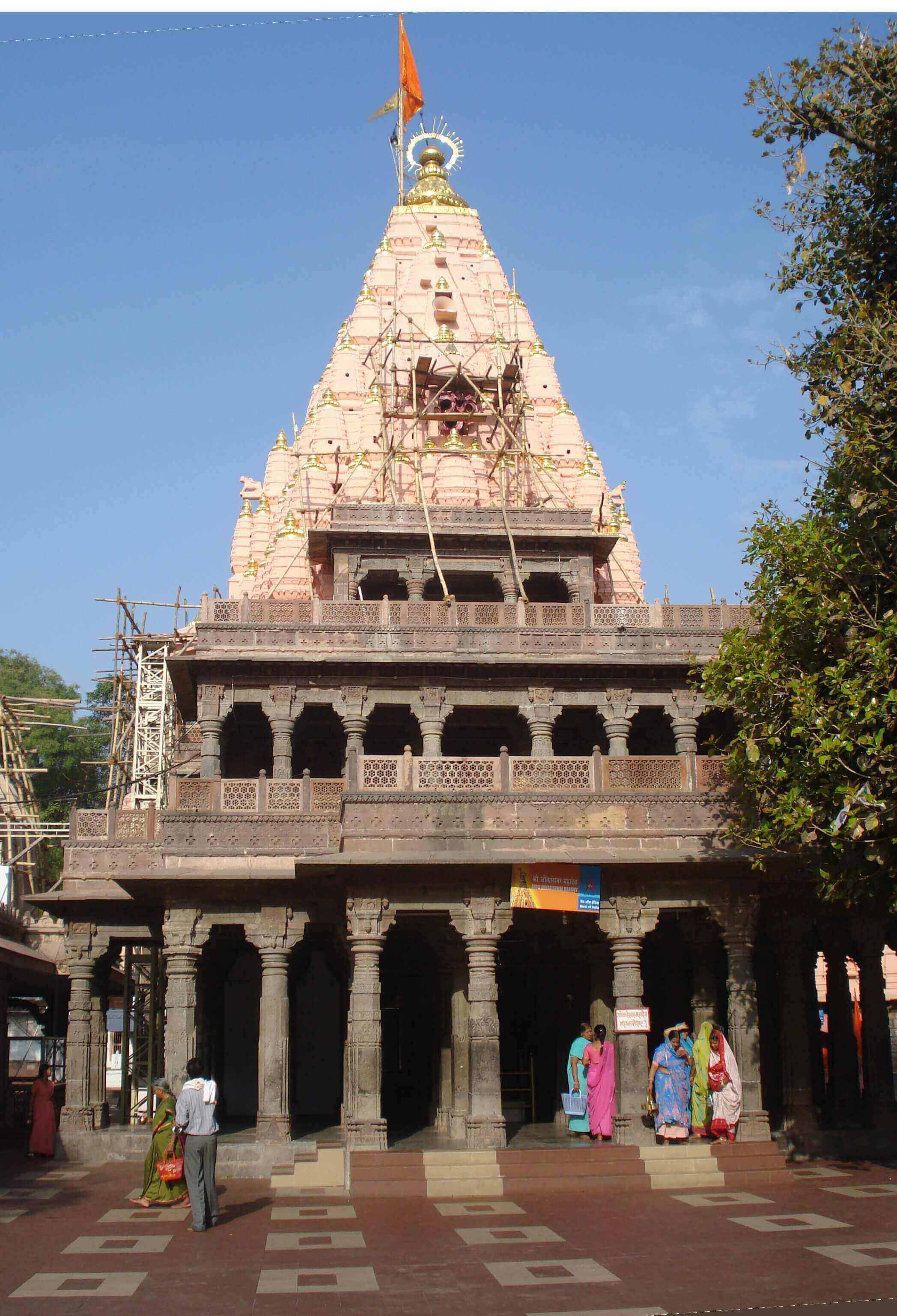The Temple of Mahakaal
अवन्तिकायां विहितावतारं मुक्तिप्रदानाय च सज्जनानाम् | अकालमृत्योः परिरक्षणार्थं वन्दे महाकालमहासुरेशम् ‖ 3 ‖
– Meaning:
I salute that Maha Kala, Who is the lord of all devas, Who has incarnated in the city of Avanthi, For giving salvation to good people, And to save people from untimely death.
The third temple in the series of Jyotirlingas is the Mahakaleshwar temple of Ujjain in the state of Madhya Pradesh. Located on the banks of river Shipra, Ujjain is among the most ancient cities of India.

The presiding deity in the temple is Lord Shiva who resides here as Mahakaal. The lingam here is Swayambhoo (Self-Originated) and derives Shakti (power) from within itself, unlike other lingam that were established ritually by chanting mantras. The temple has some unique features that make it special. Mahakaal is considered as the king here.
Why did The Lord Shiva manifest as Mahakaal here in Ujjain? The answer to this lies in one of the several legends that one gets to know while visiting this place. One legend states that when Shiva learned about Sati entering into fire, he was so furious and in agony he broke into Tandav the dance of death. He was called Mahakaal. Another popular legend says that long ago, when Ujjain was ruled by a King Chandra sen, There lived a Brahman with his four sons. They were all devotees of Lord Shiva. One day, while they were busy praying when the city was attacked by a demon, Dushan. The brahmans evoked Shiva for help. Shiva originated as Mahakaal and killed the demon. Then on the request of the brahmans and the king, who was also a Shiva-bhakt (worshipper of Shiva) the lord agreed to reside here.
Earlier known as Ujjaiyani or Avantika, the city has always been important and is mentioned in several ancient texts. Its references can be found even in early vedic era texts. It is associated with legendary warrior king, Vikramaditya ( of Vikram-Betal and Singhasan Batisi Fame.) and the famous poet Kalidas. A city this old contains fragments of ancient traditions and cultures on.
The Shiva Linga is Dakshinamukhi (south facing), unlike the rest of the Jyotirlingas. The main complex is a three-storey structure with the lingams of “Mahakaleshwar”, “Omkareshwar” and “Nagchandreshwar” in the lower, middle and upper tiers respectively. The devotees can worship Nagchandreshwar only on the day of Nag Panchami. On regular days it is inaccessible to the common Public.
The temple is famous for the Bhasm-aarti. It is exclusive to Mahakaleshwar temple and is performed early morning with sacred ashes. The word Kaal has two meanings - Time and Death. Mahakaal is the God who controls time, which is beyond man’s control. Aman is reduced to Ash post death,and the Bhasm-aarti symbolizes the act of bowing in front of Mahakaal.
The temple is known to exist here since time immemorial. The original structure was destroyed during Muslim invasions. The Present temple complex was reconstructed by the Scindias, the Maratha rulers of Gwalior.
The temple complex is a spacious courtyard with sculptural finery and sophistication that is influenced by Maratha Bhumija and Chalukya style of structural design. There is a large pool known as Koti Tirth which has importance in astronomy. To the east of the Kund lies a huge veranda, in which is the entrance to the path leading to the Garbhagriha where small size images of Parvati Ganesha and Kartikeya can be seen.
On top of Jyotirling, There are many temples and historical places. The temples of Kal Bhairav and Harsiddhi Mata that are worth visiting. Har Siddhi Mata, a local tribal goddess is considered on par with shaktipeeth.
The city has also been a centre for astronomical studies. Raja Jai singh constructed the Jantar Mantar here. The temple of Mahakaleshwar itself is built at a point where The ancient Indian Prime meridian and tropic of cancer once intersected.
Footnote:
Nearest Airport: Indore (57 km)
Nearest Railway: Ujjain (2 km)
